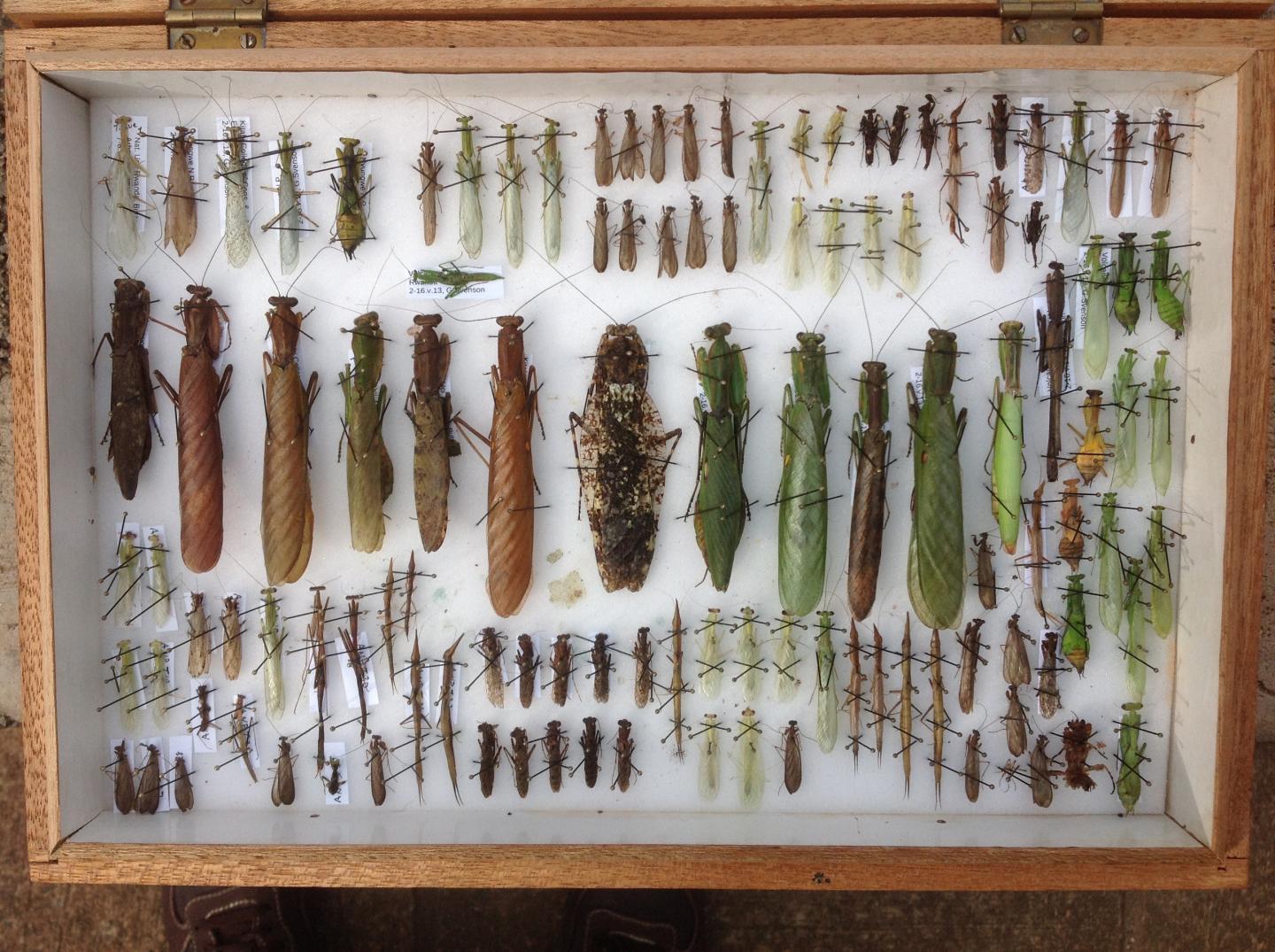
These are specimens collected in Rwanda in 2013 by The Cleveland Museum of Natural History during the first formal praying mantis survey conducted in the African country. A college student working at The Cleveland Museum of Natural History was lead author on the first formal survey of praying mantises in Rwanda, which revealed a 155 percent increase in praying mantis species diversity for the African country. Riley Tedrow, a Case Western Reserve University graduate student pursuing field research for the Museum, participated in two surveys across four locations in Rwanda, including three national parks. The survey was published Oct. 1, 2015 in the journal Zootaxa.
Tedrow helped conduct fieldwork in 2013 and 2014 with collaborators at Rwanda's Kitabi College of Conservation and Environmental Management. The team collected 739 insects representing 41 species from Akagera National Park, Nyungwe National Park, Volcanoes National Park and the Arboretum de Ruhande at the National University of Rwanda. Collection methods included sweep netting and light trapping to gather grass, bark, flower and lichen mantises.
The survey added 28 new praying mantis species records to Rwanda. These add to the 18 previously recorded praying mantis species for the country. In addition, 20 new praying mantis species were recorded for the region, including neighboring Uganda and Burundi. The study has increased scientists' knowledge of the praying mantis species present in Rwanda by 155 percent. Tedrow discovered and described one new species of praying mantis, Dystacta tigrifrutex (meaning "bush tiger mantis"), in 2014 from the insects collected. Research continues on the specimens already inventoried.
"This survey highlights a need for more thorough sampling of the insect fauna of Rwanda," said lead author Tedrow. "Undiscovered diversity is still out there--strange, wonderful and fascinating creatures whose stories I want to tell. With greater levels of biodiversity recorded in this country, we can inform conservation decisions in these important African national parks."
Tedrow worked under the direction of co-author Dr. Gavin Svenson, curator of invertebrate zoology at The Cleveland Museum of Natural History. They studied the morphological features of the praying mantis specimens and scoured scientific literature in order to classify and inventory the insects for the survey.
"Discovering this region to be so much richer in diversity for such a well-known insect group has broader implications for other plants and animals there," said Svenson. "This research is significant because it builds a baseline of knowledge about the insect ecology in Rwanda. It documents new biodiversity that we did not know existed, which enables us to monitor and track the species that live in these rainforest, savannah and mountain habitats."
This study was done as part of Svenson's broader research program, which is focused on the evolutionary patterns of relationship, distribution and complex features of praying mantises. His current research project aims to align new sources of relationship evidence (DNA sequence data) with morphology and other features to create a new and accurate classification system for praying mantises that reflects true evolutionary relationships.
Source: Cleveland Museum of Natural History
 Print Article
Print Article Mail to a Friend
Mail to a Friend
